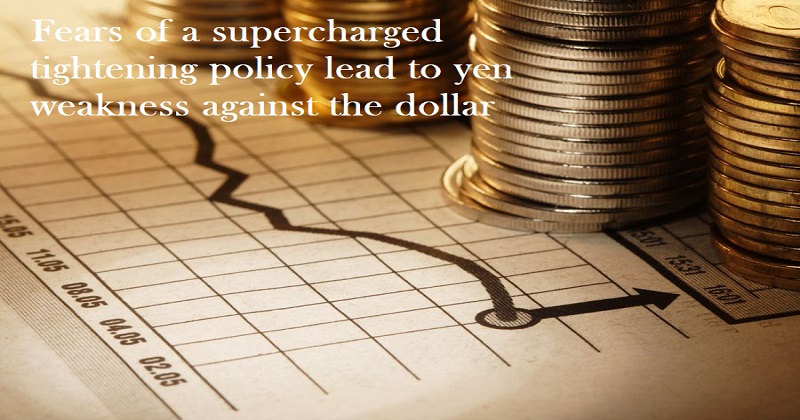
The Japanese yen fell the most against a strengthening US dollar on Friday, as a two-day rise in stocks confirmed market expectations that the Fed will need to take additional action to keep inflation under control. This realisation came after a number of Federal Reserve officials warned investors not to be overconfident in speeches and statements following this week’s minor easing in inflation numbers.
The most recent example is San Francisco Fed President Mary Daly, who stated on Thursday that a 50 basis point rate increase in September ‘makes sense’ in light of recent economic data, particularly inflation data, but she is willing to raise the rate if necessary.
The Nasdaq and S&P 500 fell on Thursday as further evidence of slowing inflation emerged. The euro fell to $1.0311, while the dollar index rose 0.1% to 105.210. The Japanese yen fell 0.12% to 133.19 per dollar, and the last known price of sterling was $1.2184, down 0.23% from the previous day. The euro rose 0.05% to 137.340 yen. Even the New Zealand dollar, which is expected to see a significant rate increase next week, fell 0.16% to $0.643 against the US dollar.
According to data released on Thursday, U.S. producer prices (PPI) unexpectedly fell in July due to lower energy prices. That followed the shocking report on Wednesday that the consumer price index (CPI) was unchanged in July due to a drop in gasoline prices.
While such news sparked a brief relief rally in markets concerned about the Fed’s accelerated tightening, it was fleeting. The Nasdaq, which is heavily weighted toward technology, has only recently recovered from mid-June lows, but it is still down nearly 18% for the year. Along with the 225 basis point increase in Fed interest rates since March, the dollar index has risen 10% this year. From a high of 135.30 against the yen on Wednesday, it had dropped to a one-week low of 131.74 overnight. It was back at 133.245 on Friday.

Post Your Comments